Due to the highly volatile nature of business, your success in any given sector boils down to adaptability, innovation, and an excellent balance of talent and strategy. Cultivating an environment that fosters these characteristics, however, requires continuous improvement and resilience.
Organizational development (OD) prepares your company for the future and keeps it flexible and adaptable in dynamic industries, making it vital for your endeavors. This article will walk you through the intricacies of OD and help you build a long-lasting company capable of managing unforeseen circumstances.
What is organizational development?
OD is built on the understanding that an organization’s processes and structures affect employee motivation and efficiency. It refers to a systematic approach that improves the effectiveness of your operations, as well as the competencies of your workforce.
The practice of OD utilizes behavioral sciences (e.g., sensitivity training) and involves activities such as analysis, action planning, and evaluation.
“OD is a process of continuous diagnosis, action planning, implementation and evaluation, with the goal of transferring knowledge and skills to organizations to improve their capacity for solving problems and managing future change.” – Organizational Development Theory
This strategy aims to enhance the well-being of your company and its members by focusing on continuous improvement and adaptability to rapidly changing industries and business environments.
Key concepts
Organizational development theory is built on the following pillars.
Organizational climate
“Climate” refers to your business’s personality. It analyzes the company’s voice, tone, beliefs, leadership, conflict resolution structures, and how well defined each role is. It draws on how your employees perceive your practices and how those actions impact their behaviors.
Organizational culture
Culture encompasses your business’s norms, including assumptions, values, and conduct. This includes aspects deeply entrenched at all levels, from your top leadership to your employees.
Organizational strategies
Strategies, meanwhile, cover the different steps involved in OD. The Association for Talent Development created a helpful diagram that gives a basic overview of the process:
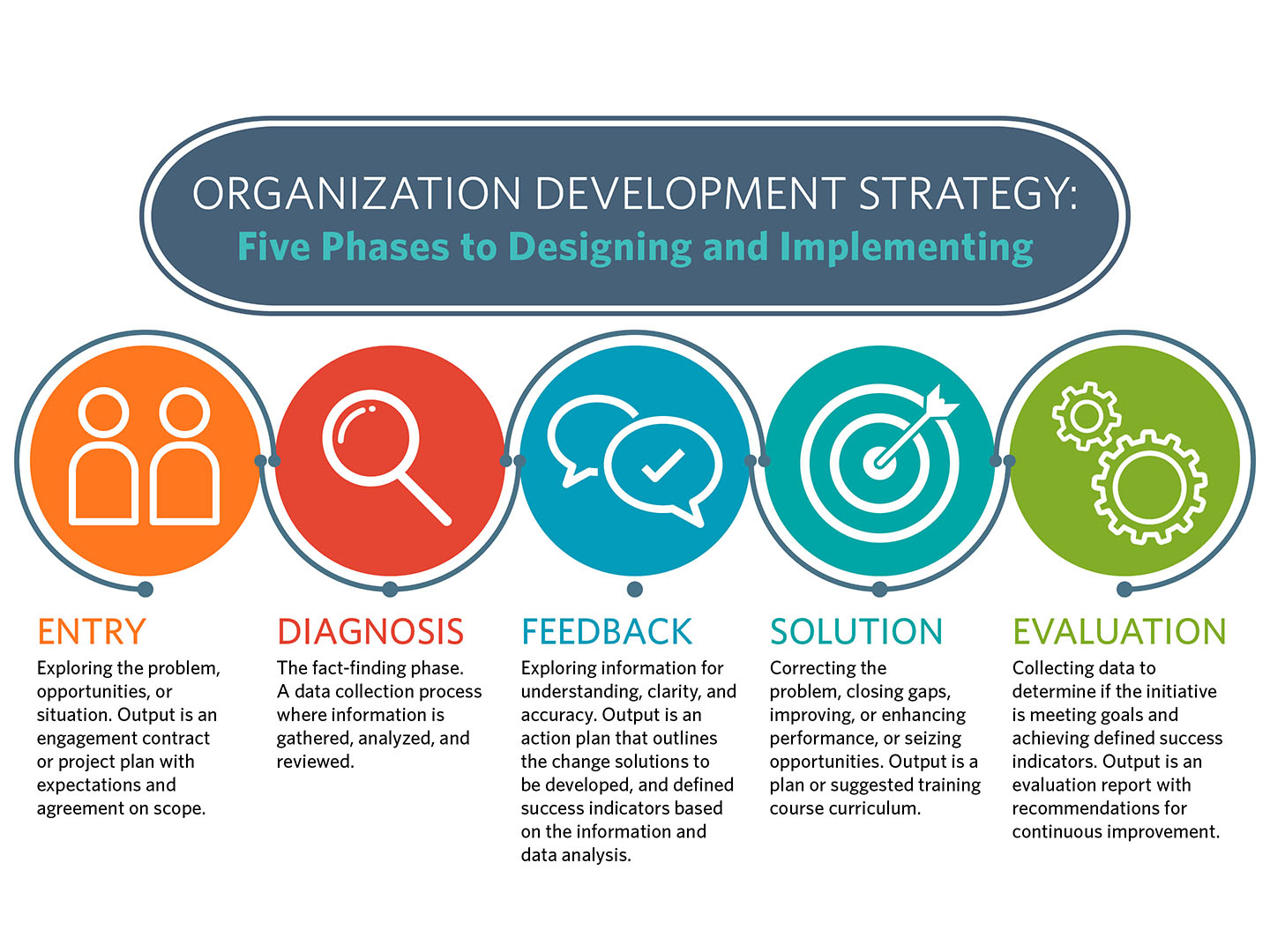
Image: Association for Talent Development
In essence, there are five stages you must carry out:
- Entry: This is where you assess your current situation, with the primary objective of identifying problems and opportunities.
- Diagnosis: This part of the process entails gathering data, particularly about the results of your Entry stage, and involves careful review and analysis.
- Feedback: After gaining a clear understanding of the information you’ve collected, your next step is to establish solutions, plans, goals, and key performance indicators (KPIs) for your OD initiatives.
- Solution: This stage revolves around your plan’s implementation, addressing any areas of improvement and opportunities, whether it be through overhauls to your business processes and technology or employee training.
- Evaluation: The final phase involves measuring your OD efforts, identifying what does and doesn’t work, implementing positive changes, and making strategic adjustments.
Why is organizational development beneficial?
OD offers numerous advantages that contribute to your business’s long-term sustainability and success.
Better leadership
The process pinpoints issues and necessary alterations across all levels of your workforce, including those in executive and managerial roles. The recommended initiatives then develop and nurture their business leadership skills to ensure effective management.
Organizational alignment
Improved leadership keeps members of your organization on the same page. With everyone’s approach to success in alignment, all their contributions will match the company’s values and goals and promote a positive culture.
Enhanced productivity
By optimizing processes, as well as identifying skill gaps and bridging them through upskilling, OD increases productivity throughout your organization.
Employee satisfaction
Learning, development, and wellness initiatives result in higher job satisfaction, reduce turnover, and enhance employee engagement.
Improved communication
OD dives into your company’s climate and culture, two elements that impact an organization’s internal communication strategies and channels. Effective development strategies, meanwhile, also improve these aspects, promoting transparency and collaboration among team members.
Adaptability
Systematic OD applies tactics that promote a business’s continuous improvement — mostly concerning its operations and people — which enables it to adapt to dynamic industry, market, and regulatory landscapes (among others) and ensures its long-term survival.
Innovation and creativity
OD constantly finds ways for a company to establish a sustainable culture of innovation. This cultivates an environment where employees have the freedom to approach problems and opportunities uniquely, then produce creative ideas and solutions.
What are the challenges of organizational development?

While OD does provide substantial benefits, it nevertheless brings obstacles that you have to deal with.
Resistance to change
A major shift in any business element, such as your processes, leadership, technology, etc., can unsettle employees and managers, especially if they’ve been in place for a long time.
Since adjustments to their usual roles and routines will be necessary but inevitably cause some discomfort, this can result in resistance to your upcoming changes and hinder the implementation of OD initiatives.
It’s resource intensive
The transition to new operating procedures, tools, skills, and management requires a significant investment of time, effort, manpower, and finances. Although your OD efforts offer long-term advantages, it can hurt if your resources are limited.
Uncertain outcomes
OD is an ongoing process that can last for months or sometimes years. This means the results of your intervention won’t always be immediately evident, and measuring success can be difficult. As such, you’ll face another challenge with OD: regularly dealing with uncertainty.
Organizational misalignments
OD is designed to improve your leadership, but the opposite can occur if your plans aren’t aligned with the existing company culture.
Let’s say the changes you’ve planned don’t match the organization’s current values. This can lead to a lack of commitment or understanding from your leaders, which trickles down to their team members and undermines the success of your OD initiatives.
How are organizational development and HR related?
Since the organization’s members have to adjust to significant internal changes with OD, human resources (HR) plays a pivotal role throughout the process.
Change management
The largest role they’ll play involves change management: To accommodate shifts in processes, technology, and leadership, the redefinition of established roles may be necessary.
Besides evaluating your personnel and matching their skills to new positions, HR will have to handle the human side as well. That entails supporting employees throughout the OD process, helping them adjust to new routines, manage stress, and overcoming resistance to change.
Employee engagement
Reshaping your business for the better is extremely beneficial, but too many revisions can cause change fatigue, which results in apathetic or overwhelmed employees. This ties closely to change management as well, so it’s HR’s job to develop initiatives that boost worker morale and satisfaction.
Recruitment
Since business transformation involves the identification of skill gaps and significantly affects operations and roles, the need for additional personnel will arise. To address this, HR will have to bear the responsibility of recruiting top talent that can bolster your workforce.
Training and development
Throughout OD, employees will have to learn new tools, processes, and responsibilities. Enhancing their skills and knowledge, meanwhile, will require HR to create and implement training and development programs.
Performance management
Regularly measuring and evaluating your efforts is the final step in OD, and it includes the people in your organization as well. That means HR will play a key role in gauging employee performance and then aligning how individuals and teams work towards achieving your business’s goals.
Keys to successful organizational development

Knowing the basics of OD and HR’s role isn’t enough. Before making any modifications to your business, take note of the following important considerations.
In-depth data gathering
Elements that affect your overall business situation, such as strengths, weaknesses, problems and opportunities, are factored in when kickstarting the OD process. These include:
- Your internal procedures
- Company values
- Employee skills and competencies
- The technology you use
- Workplace culture
Since these areas act as the building blocks for your goals, plans, and initiatives, invest in thorough research and analysis.
Distinct objectives
Clear and actionable goals point your OD efforts in the right direction. Since KPIs are crucial for quantifying performance, your objectives should also be specific, measurable, achievable, relevant, and time-bound (SMART).
For instance, do you want to build rewards and wellness programs that can take your employee net promoter score (eNPS) into the 90s range within a year? Or, are you looking to improve your retention rates by 25%?
Once you set your targets, make sure that they align with your organization’s climate and culture, then develop a plan to achieve them.
Leadership commitment
Obviously, leaders play a pivotal role throughout the OD process, and their active participation is crucial for its success. They determine the overall direction of your business, ensure all parties — from managers to employees — buy into the transformations, help implement the plans of action, and make decisions. Essentially, their influence affects everyone from top to bottom.
Employee inclusion
Each employee possesses unique insights and expertise. Involving them in the OD process helps you gain diverse perspectives, nurtures their engagement, and results in better-informed decisions.
So, ask for their input. See what they think would improve the organization’s well-being. Every team member offers a different point of view and can identify problems and opportunities that others might miss.
Transparency
Your personnel will feel the effects of organizational changes the most, so it’s extremely important you maintain complete transparency and regularly share updates to minimize friction.
Clearly talk about your goals and initiatives to prevent confusion, avoid resistance, and secure buy-in. It’s vital that employees, managers, and decision-makers across all levels understand the reasons for upcoming business transformations.
Regular monitoring and evaluation
Although the OD process involves careful data gathering, as well as meticulous planning and preparation, your efforts won’t always generate the desired results. That’s why establishing KPIs and identifying actions that influence them are imperative. For the best outcome, be sure to:
- Consistently measure the results of your initiatives
- Hone in on opportunities and problem areas whenever possible
- Make strategic adjustments when appropriate
Flexibility
Flexibility is a must in the OD process.
Let’s say new marketing processes end up hindering how sales employees operate. They’ll require training to accommodate the changes, so resources should be readily available. During such situations, a reserve pool of finances and manpower can help.
Also, be open to modifying your strategy based on the organization’s evolving needs. This approach keeps your business on its toes and enables it to adapt to unforeseen circumstances.
Best practices for organizational development

At this point, you’re ready to dive into the OD process. To maximize the results of your efforts, keep the below helpful tips in mind.
Seek out your managers’ support
Your people’s buy-in is the first task to complete before implementing your development plans. When you bring managers on board for organizational changes and restructuring, their team members will feel more comfortable with it as well because:
- Their active support ensures employees across the business are aligned
- Their proactive communication helps teams avoid confusion
- They nurture a clear understanding that helps minimize resistance
Back up your efforts with data
Your best employees won’t follow you blindly. To gain their backing, always support your case for organizational shifts with concrete evidence and information. Make sure to utilize:
- Industry trends
- Marketing metrics
- Customer satisfaction surveys
- Competitor analysis results
Clearly explain the need for OD and how it affects your company’s future. Frame your planned changes in a straightforward manner as well; employees must easily understand these alterations on both an individual and macro level, as well as how they’ll benefit in the long term.
Get your employees involved
We mentioned how employee inclusion is a key component of successful OD because the process can involve the restructuring and redesigning of various jobs. In those instances, gathering worker input is a must, as their experiences on the ground give them company insights that you lack. Learn what their responsibilities are, talk about the challenges they face, then match their strengths and skills with the redefined roles.
A deep involvement will improve their engagement, help determine the training they’ll need, and smoothe the overall transition. Their feedback may even decide whether major shifts are necessary at all.
Plan for future leadership
Transitions in leadership can take place throughout the development of your organization. Succession planning is thus a powerful approach that allows you to prepare for these fluctuations.
It involves picking out and grooming future decision-makers from within your company and is especially helpful for maximizing potential that’s right in front of you. The strategy can even help you fill roles as they’re emptied or created.
Keep people in the loop
Since your employees will need to adjust to changes in operations and responsibilities that result from your OD plan’s rollout, they’ll inevitably experience discomfort.
As your initiatives continue, regularly clarify the reasoning behind them, especially for those whose jobs are directly affected. Overlooking this leaves you open to resistance, so consistently maintain transparent communications. Additionally, if your business transformation includes workforce reduction, avert panic by informing the people you’ll keep on board.
Set and share clear timelines
Like any well-planned strategy, your company’s continuous development should take place over organized, timed stages.
Set target dates for key actionables, like when old software will be phased out and training for a new one will commence, and share them with your team early on. This eases coordination among your employees and helps HR sort out any scheduling conflicts.
Regularly train and develop talent
Addressing skill gaps and acclimating to new processes and tools necessitates educational opportunities. To help employees navigate these aspects, invest in their careers and provide training and development programs. This also nurtures their competencies, loyalty, and engagement.
Build a diverse and inclusive workforce
Having a healthy mix of people from different backgrounds can strongly benefit your OD initiatives. Diversity, equity, inclusion, and belonging (DEIB) can even enhance the following business aspects:
- Employee engagement: Research from McKinsey found that employees who feel included at work are “nearly three times more likely … to feel excited by and committed to their organizations.”
- Decision-making: Teams whose members are of different age ranges and geographic locations make better business decisions up to 87% of the time.
Conduct team-building activities
Changes to your business’s structure, operations, leadership, and employees’ roles will alter how teams approach collaboration. To ease their adjustments and foster cohesion among your personnel, make room for team-building activities. They can start with simple, yet fun team-based games like charades, or a dinner outside the office, then transition to working on shared tasks as they build chemistry.
Recognize and reward employees
OD involves building new routines around organizational changes and meeting various objectives over a long period of time, and that experience can prove strenuous for your workforce.
To retain your talent and keep them happy, it’s immensely important that you reward and recognize their accomplishments. Whether it be through bonuses or opportunities to handle desired projects, show appreciation when they contribute to your business goals.
Wellness programs
As the previous point showed, OD can be a cause of stress for employees. You can help your people manage the challenges that arise from your development plans by launching initiatives that focus on their health and work-life balance.
These can range from exercise programs and stress management education to wellness assessments. Whatever strategy you choose, make sure to keep your people’s well-being in check.
Utilize tools and technology
Incorporate the right tools and technology into your strategy to streamline your processes and improve employee efficiency. Take scalability into account to avoid the cost and hassle of changing them whenever your business attains a specific size. Look for options with features that scale with your business’s future growth and development.
Assessments are also powerful instruments for your OD initiatives. These identify employee strengths, weaknesses, skills, and behaviors, which then helps ensure your personnel’s competencies match the new or redefined roles that are created through any organizational changes.
Measure and improve
Constantly analyze your changes, objectives, and workforce competencies, then make strategic adjustments to achieve the best results. Besides measuring KPIs (and to streamline the OD process), you can also put feedback mechanisms in place so that employees can directly share insights and assist you in your initiatives.
It’s easy to fall into a pattern and keep the same procedures. So, continuously evaluate whether your “staples” (i.e., a particular product, service, or process) have become unnecessary.
Organizational development resources
We’ve covered all the necessary elements to put OD into action. If you’re looking for additional knowledge and guidance though, we’ve put together a list of resources and tools that can help you navigate the various stages of your business’s long-term development.
re:Work
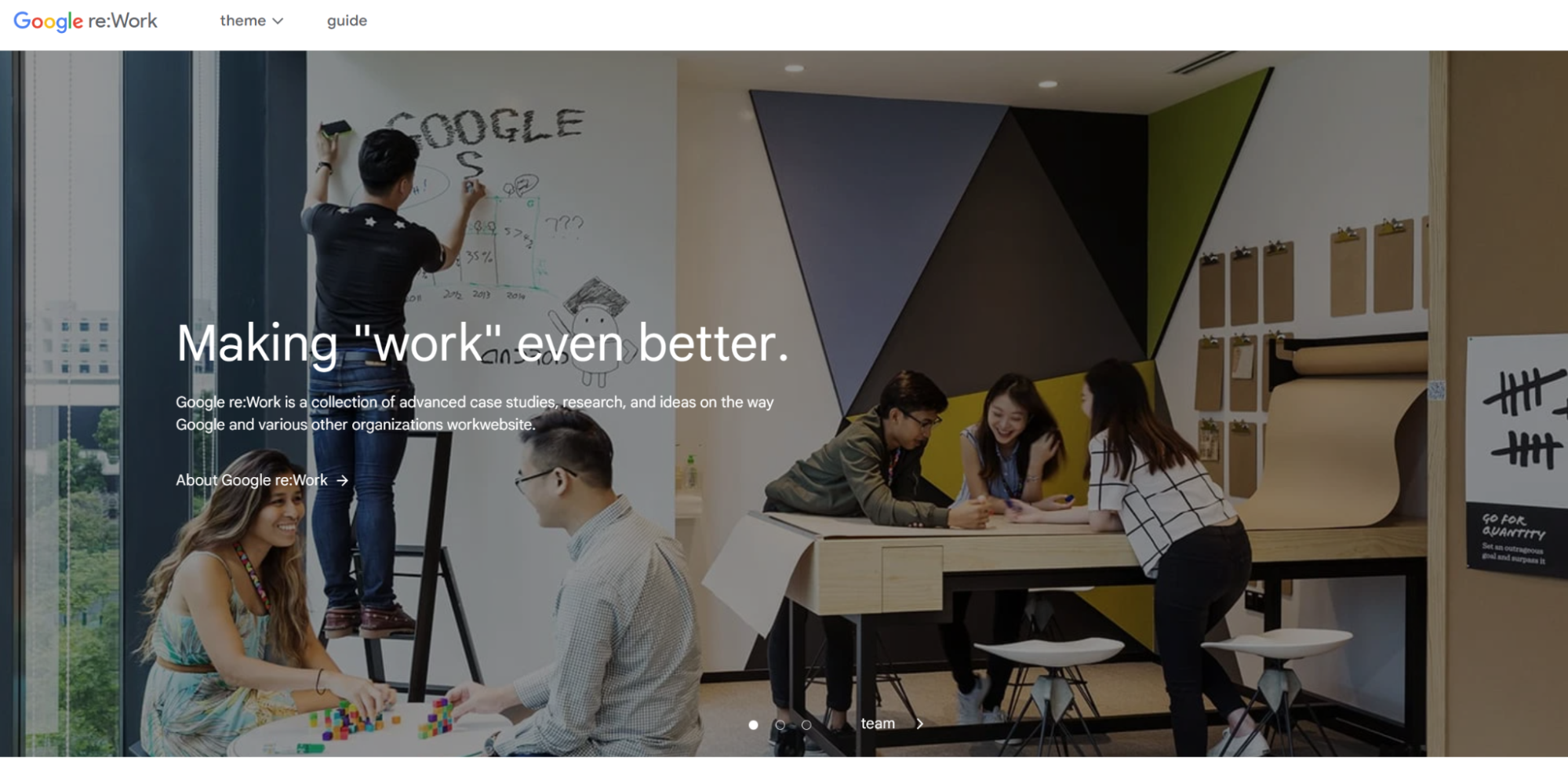
re:Work shares research, practices, and ideas from Google, tackling many business areas like:
- Innovation
- Teams
- People analytics
- Management
- Eliminating prejudice
- Learning and development
- Setting goals
It offers a collection of articles that discuss how to run your business properly, create a productive workplace, and more. Guides about smart decision-making, evaluating team effectiveness, and developing and supporting managers are also available.
However, be aware that the re:Work website is in Japanese. To browse it in your desired language, you’ll have to use Google Translate.
Organizational development solutions
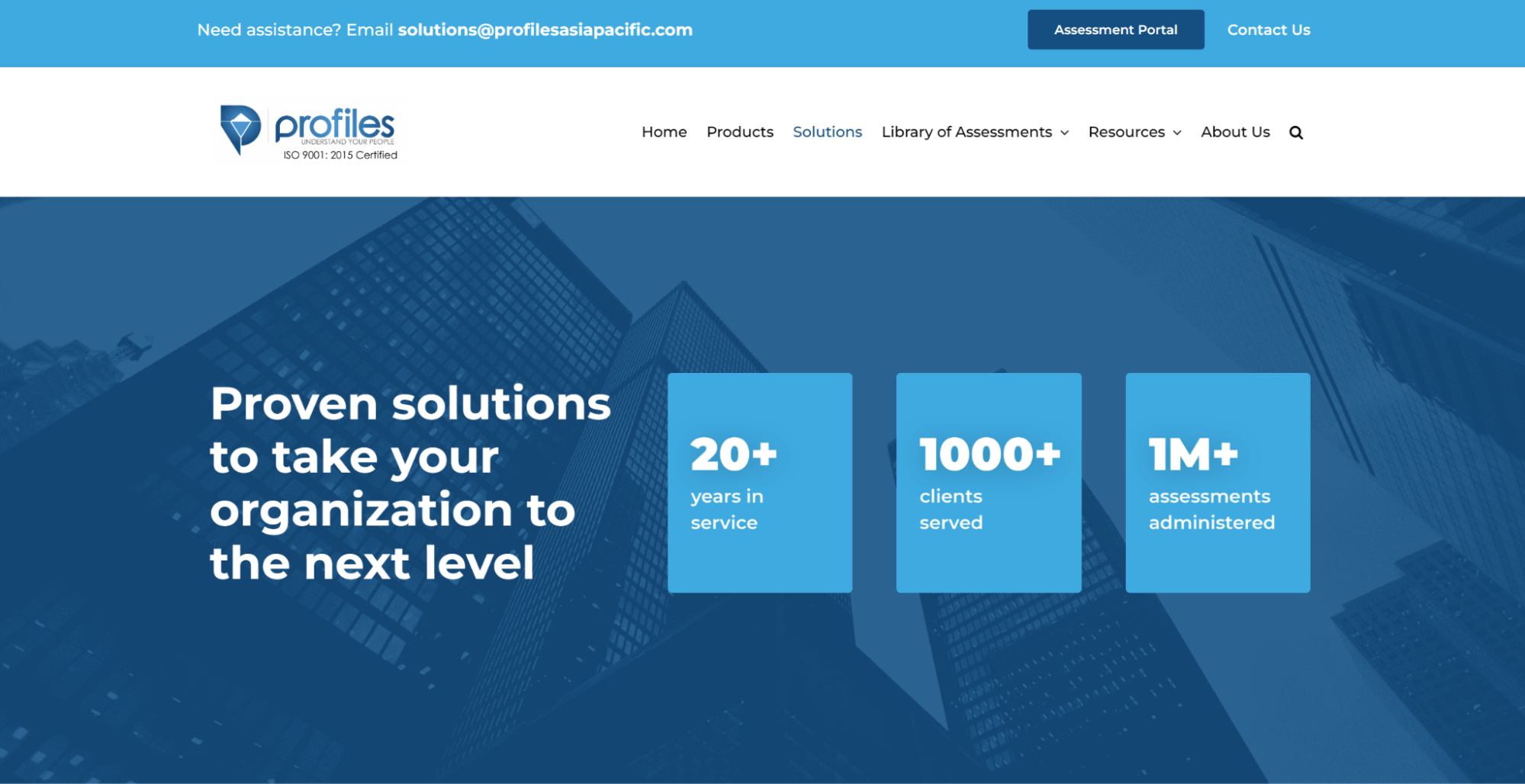
Profiles Asia Pacific provides various solutions that cater to many Philippine organizations’ developmental needs. These include:
- Employee development: This lets your company reskill, upskill, and right-skill employees to meet its evolving requirements.
- Leadership development: This pinpoints and develops leaders who can guide your organization through its ongoing changes.
- Performance management: This identifies and resolves performance issues that may arise throughout OD and, in turn, improves employee retention.
- Succession planning: This lets you create a talent pipeline that ensures a seamless transition of leadership and responsibility.
- Strategic talent management: This helps you achieve development goals by having the right people in the right jobs at the right time.
Overview of the Field of Organization Development
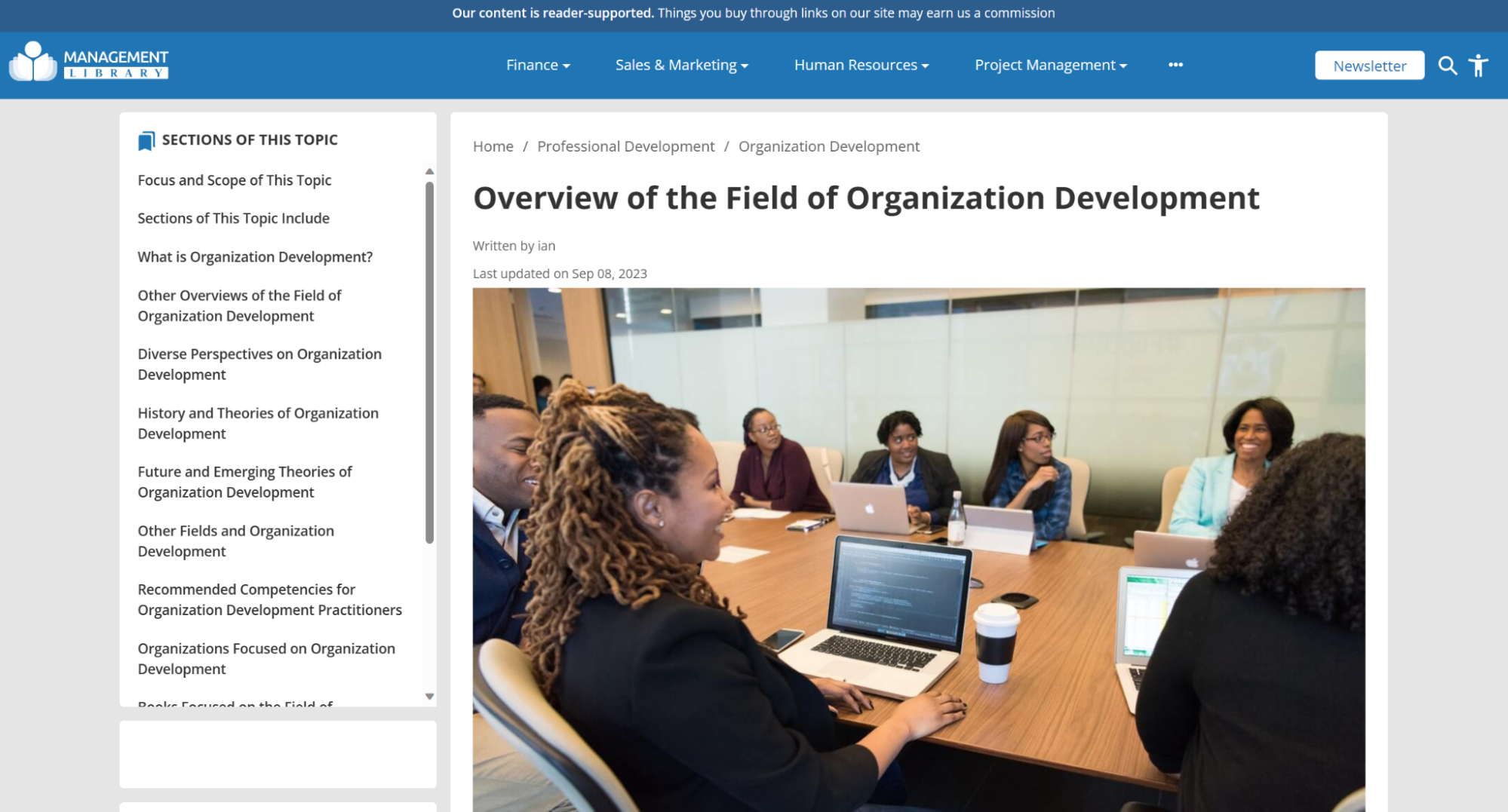
Management Library’s “Overview of the Field of Organization Development” provides an expansive library of materials dedicated to the topic of OD. It dives into various subject matter, such as:
- A basic overview of OD
- The history and theories of OD
- Future and emerging OD theories
- The field’s various perspective,
This single resource even points you toward other organizations and books devoted to the OD process.
How to Implement a New Strategy Without Disrupting Your Organization
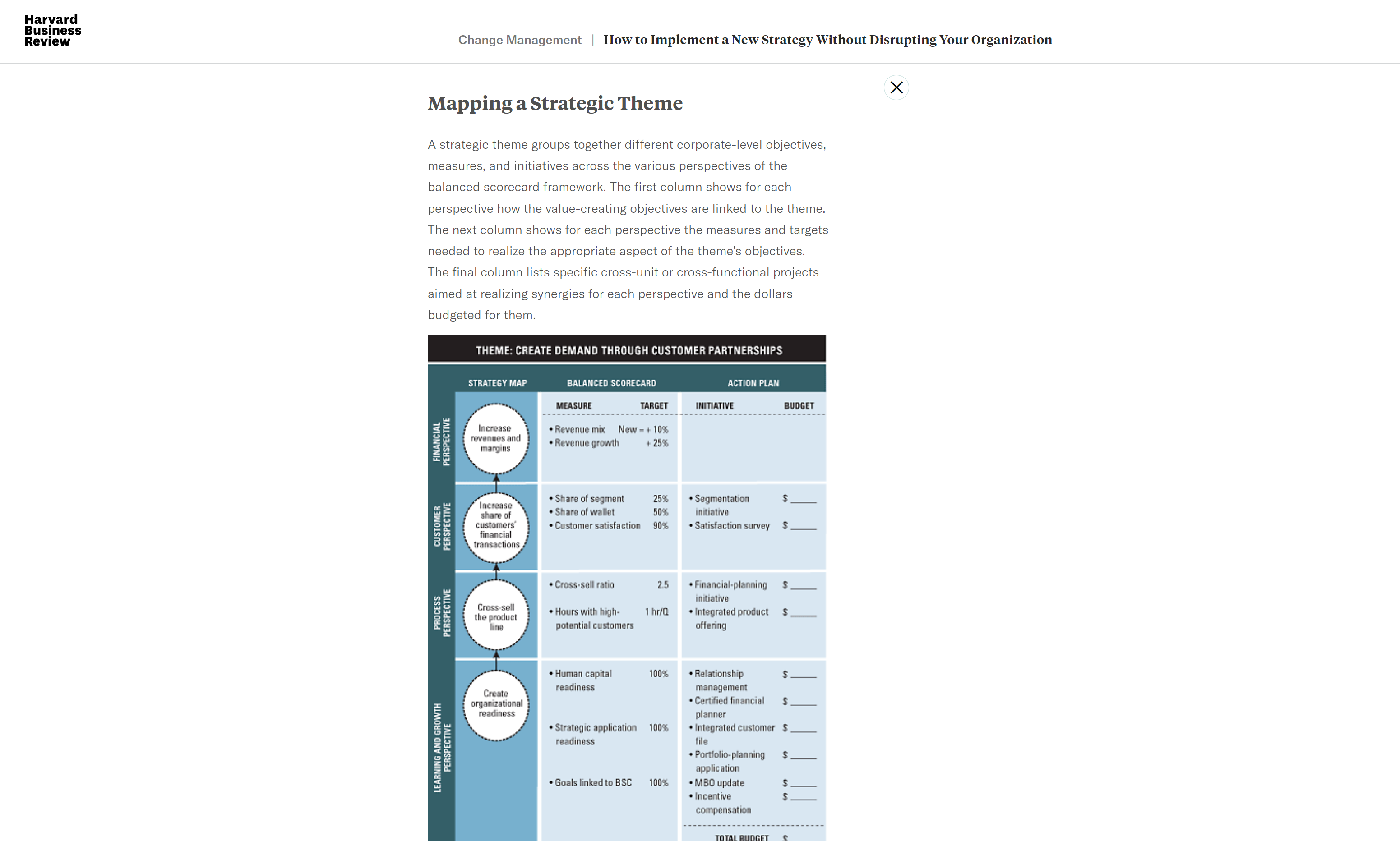
In this Harvard Business Review article, Robert S. Kaplan and David P. Norton outline the various perspectives needed when considering organizational changes. They also discuss how to approach these strategies to cause minimal disruptions. The two also include case studies, go over coordinating diversity, and offer actionable advice.
Wrapping up — Organizational development equips your business for the future
OD is a dynamic and essential process that businesses must undergo to achieve sustainability and success in competitive industries and environments. To carry it out successfully, keep in mind its core concepts, benefits, and challenges, HR’s pivotal role, and the key considerations and best practices for OD.
Once you kick-start your efforts, everyone must collaboratively work to build an agile and resilient organization. Although it’s a lengthy and continuous process that requires a significant investment of resources, the long-term rewards gained from efficient OD are worth it.




